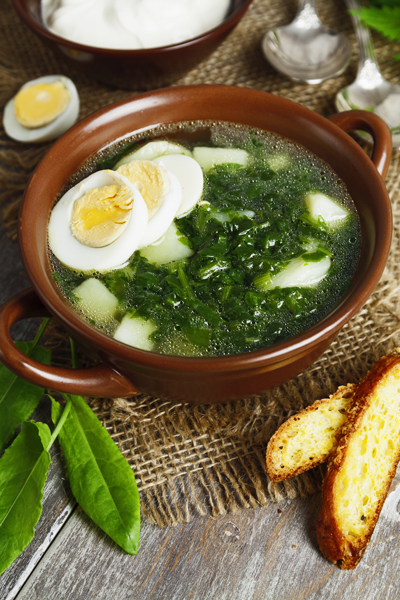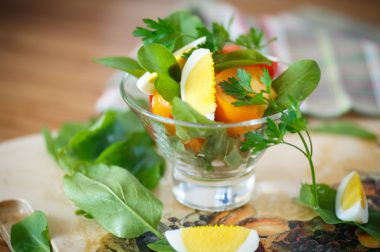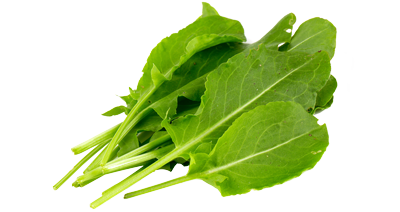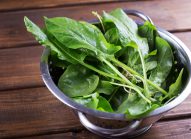Health
benefits
High-fiber leaves
Sorrel is a low-calorie vegetable, as it has a high water content…and also plenty of fiber. Fiber promotes good intestinal function and satiety.
A champion in antioxidants
Yes, sorrel is green, but when cooked, it is rich in carotenoids—almost 1/3 of which are carotene, or provitamin A—as well as lutein and zeaxanthin. These carotenoids are powerful antioxidants. They play a beneficial role in the prevention of cardiovascular disease and cancer. They also have a specific protective effect on the retina.
Sorrel is also:
- a source of vitamin B9 (for cellular renewal, particularly important for pregnant women for fetal development, for growing children, and for convalescents).
- a source of vitamin C (for immune and nervous system health, collagen formation, energy, fatigue reduction, and iron absorption)
- a source of iron (for cognitive function, red blood cells, the immune system, energy, and fatigue reduction)
- a source of magnesium (for fatigue reduction, energy, protein synthesis, muscular contraction, nerve impulse transmission, and bone and teeth health)
- a source of potassium (for the nervous system, muscular function, and blood pressure)
It also contains calcium
Nutritional
composition

When is the right
time to eat it?
April to November.
Sorrel is available year-round, but its high season extends from April to November.
-
January
-
February
-
March
-
April
-
May
-
June
-
July
-
August
-
September
-
October
-
November
-
December
Vegetable patch or
urban balcony?
Sorrel is a perennial that grows well in partial shade, in cool soil rich in humus.
To learn everything you need to know about growing sorrel, read the page on growing advice.
Choosing and
storing sorrel
Choose your sorrel well:
The leaves should not be wilted and should be dark green, in a generous, well-ventilated bunch.
Properly store your sorrel:
In the refrigerator: Three days in the vegetable drawer, in a perforated bag.
Tips and
tricks
How to prepare sorrel
It’s easy! All you have to do is remove the stalks and rinse it.
Sorrel goes well with…
Raw: Its highly unique taste, between bitterness and tartness, is delicious in salads and makes us forget that sorrel has often been wrongly considered as a weed! Sorrel is tasty in a mesclun mix or with other salad greens and raw vegetables (tomatoes, beets, carrots, etc.). It also goes well in sweet and savory recipes (in honey, syrups, etc.).
Cooked: Sorrel can be steamed for a few minutes, added to a soup, or even stir fried. It is a perfect accompaniment for eggs, fish (especially carp and salmon), and cream (for flavorful sauces).
Can everyone
eat it?

Young children
Children can eat sorrel starting at age two. To mellow out the taste, add it to a potato puree.
And everyone else
Sorrel is rich in oxalic acid, which can cause problems for people who suffer from urinary tract stones. Ask for advice from a health professional.
See plenty of other tips for encouraging children to eat vegetables
Where does it come from?
Origins and varieties
Origins: France, Belgium, and the Netherlands are the main producers of sorrel.
Varieties: There are around 100 varieties of sorrel, one of the best known of which is garden sorrel, distinguished by large, arrow-shaped leaves with an interior part that resembles teeth. Its reddish, bell-shaped flowers bloom on stalks at the beginning of summer.
- French sorrel has rounded, large, fleshy, lanceolate leaves in bright green bunches.
- Patience dock is the largest, with round, rough leaves and green flowers.


